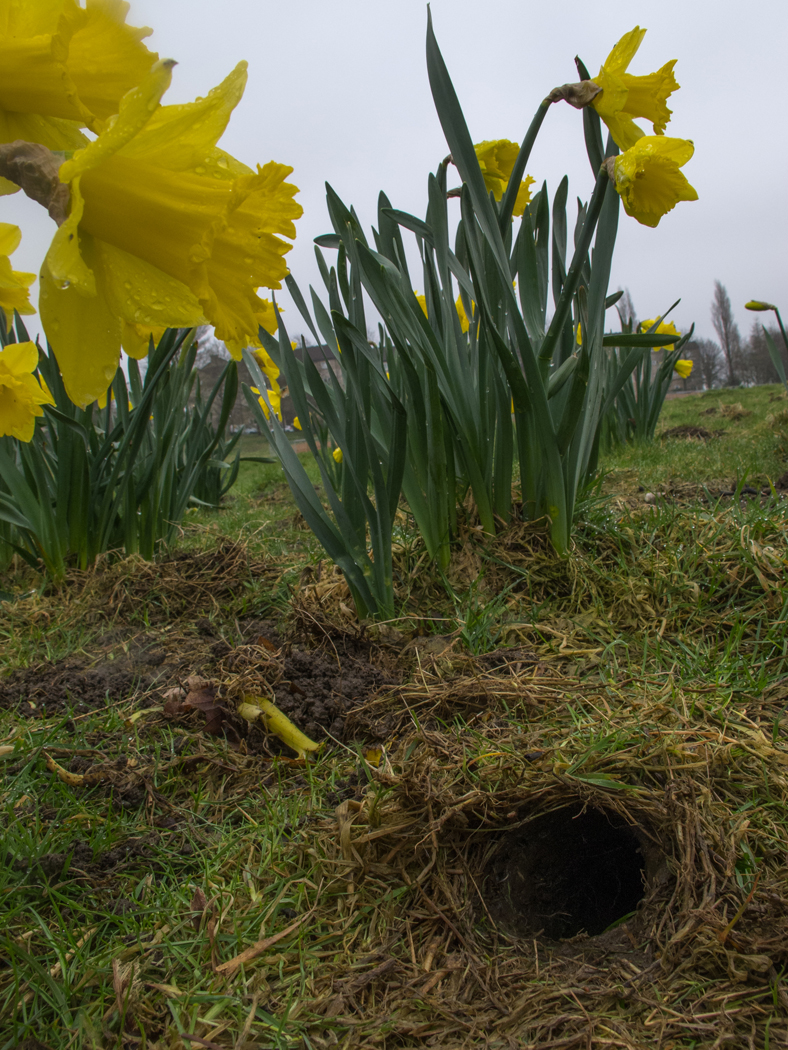The Greater Easterhouse Green Infrastructure (GI) project focuses on redeveloping 3 parks in the east end of Glasgow. At the heart of the project is the creation of new surface water management features, including daylighted water courses, swales and detention basins, linked to wider improvements to access, landscape and habitats. This in turn enables development of adjacent vacant and derelict land by reducing pressure in existing drainage networks.
An additional feature of the project is the presence of water voles at all 3 parks. In 2008 biodiversity officers were first alerted to water voles living in rough grasslands along the M8 in Easterhouse. Surveys carried out in partnership with the University of Glasgow revealed a nationally significant population of water voles in parks and greenspaces where grass had been left to grow long – including sites over 1km away from the nearest water course.
Water voles have declined by over 80% across the UK in recent years, so it was a huge surprise to find such a large population thriving in a dense urban areas. Water vole burrows are protected by law – and it is a criminal offence to disturb them without a licence from SNH. For the Greater Easterhouse GI project this has meant trapping and relocating animals from the areas to be re-landscaped – and creating new, permanent grassland and wetland habitat. The challenge now is to ensure ongoing conservation management of this unique grassland population in an area earmarked for significant development and regeneration.

Water vole burrow at Cranhill Park. Scott Ferguson


